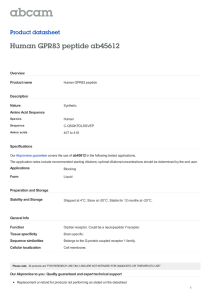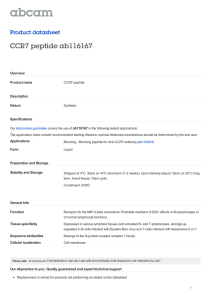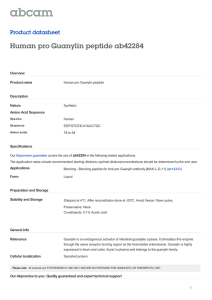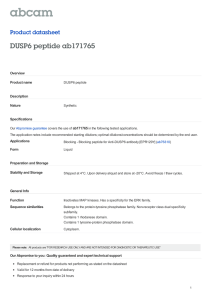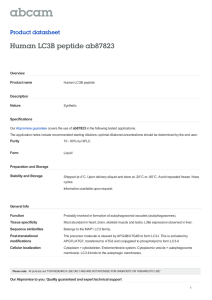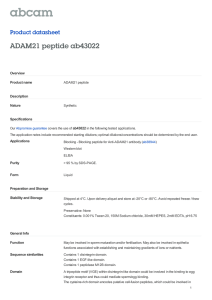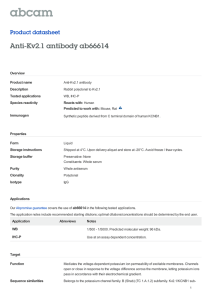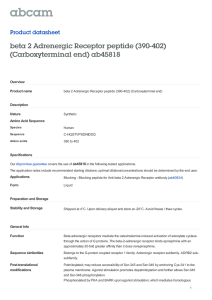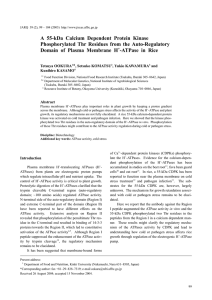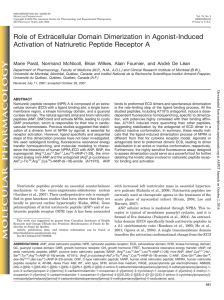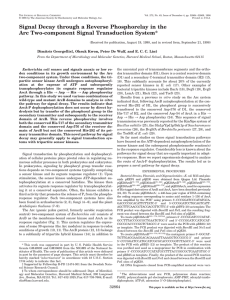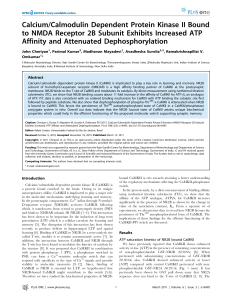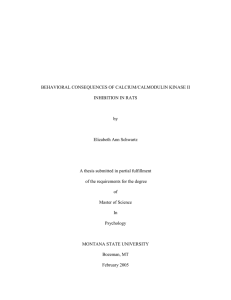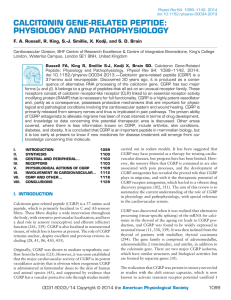VR1 peptide ab5894 Product datasheet Overview Product name
advertisement
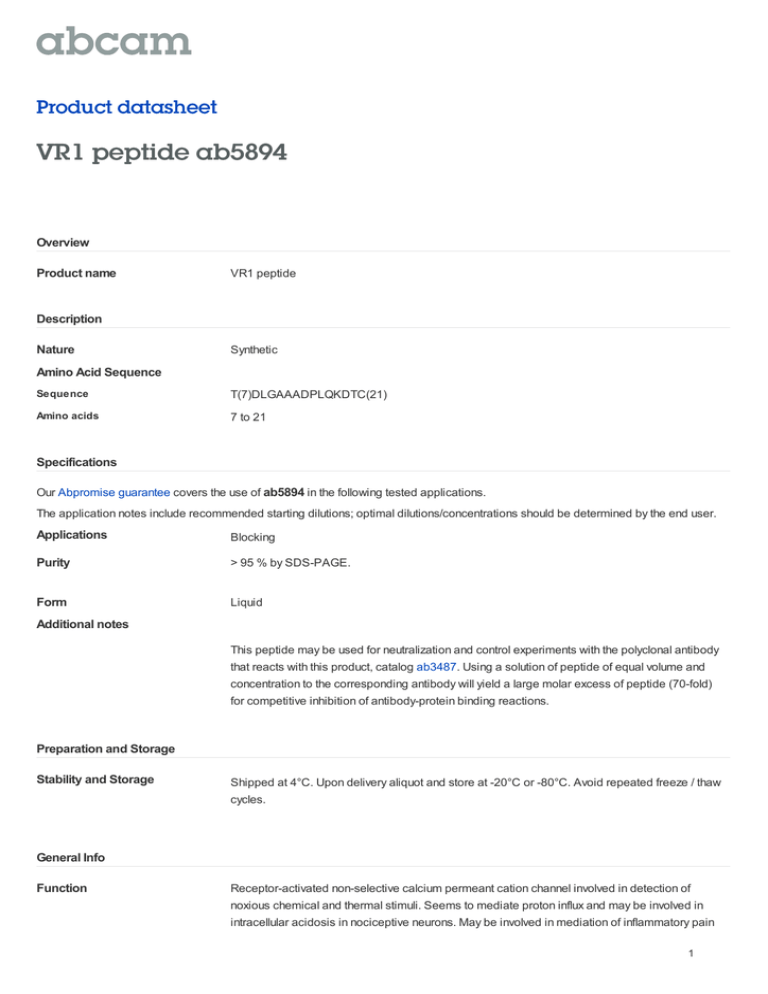
Product datasheet VR1 peptide ab5894 Overview Product name VR1 peptide Description Nature Synthetic Amino Acid Sequence Sequence T(7)DLGAAADPLQKDTC(21) Amino acids 7 to 21 Specifications Our Abpromise guarantee covers the use of ab5894 in the following tested applications. The application notes include recommended starting dilutions; optimal dilutions/concentrations should be determined by the end user. Applications Blocking Purity > 95 % by SDS-PAGE. Form Liquid Additional notes This peptide may be used for neutralization and control experiments with the polyclonal antibody that reacts with this product, catalog ab3487. Using a solution of peptide of equal volume and concentration to the corresponding antibody will yield a large molar excess of peptide (70-fold) for competitive inhibition of antibody-protein binding reactions. Preparation and Storage Stability and Storage Shipped at 4°C. Upon delivery aliquot and store at -20°C or -80°C. Avoid repeated freeze / thaw cycles. General Info Function Receptor-activated non-selective calcium permeant cation channel involved in detection of noxious chemical and thermal stimuli. Seems to mediate proton influx and may be involved in intracellular acidosis in nociceptive neurons. May be involved in mediation of inflammatory pain 1 and hyperalgesia. Sensitized by a phosphatidylinositol second messenger system activated by receptor tyrosine kinases, which involves PKC isozymes and PCL. Acts as ionotropic endocannabinoid receptor with central neuromodulatory effects. Triggers a form of long-term depression (TRPV1-LTD) mediated by the endocannabinoid anandamine in the hippocampus and nucleus accubens by affecting AMPA receptors endocytosis. Tissue specificity Widely expressed at low levels. Expression is elevated in dorsal root ganglia. In skin, expressed in cutaneous sensory nerve fibers, mast cells, epidermal keratinocytes, dermal blood vessels, the inner root sheet and the infundibulum of hair follicles, differentiated sebocytes, sweat gland ducts, and the secretory portion of eccrine sweat glands (at protein level). Sequence similarities Belongs to the transient receptor (TC 1.A.4) family. TrpV subfamily. TRPV1 sub-subfamily. Contains 6 ANK repeats. Domain The association domain (AD) is necessary for self-association. Post-translational modifications Phosphorylation by PKA reverses capsaicin-induced dephosphorylation at multiple sites, probably including Ser-117 as a major phosphorylation site. Phoshphorylation by CAMKII seems to regulate binding to vanilloids. Phosphorylated and modulated by PKCM and probably PKCZ. Dephosphorylation by calcineurin seems to lead to receptor desensitization and phosphorylation by CAMKII recovers activity. Cellular localization Cell junction > synapse > postsynaptic cell membrane. Cell projection > dendritic spine membrane. Please note: All products are "FOR RESEARCH USE ONLY AND ARE NOT INTENDED FOR DIAGNOSTIC OR THERAPEUTIC USE" Our Abpromise to you: Quality guaranteed and expert technical support Replacement or refund for products not performing as stated on the datasheet Valid for 12 months from date of delivery Response to your inquiry within 24 hours We provide support in Chinese, English, French, German, Japanese and Spanish Extensive multi-media technical resources to help you We investigate all quality concerns to ensure our products perform to the highest standards If the product does not perform as described on this datasheet, we will offer a refund or replacement. For full details of the Abpromise, please visit http://www.abcam.com/abpromise or contact our technical team. Terms and conditions Guarantee only valid for products bought direct from Abcam or one of our authorized distributors 2
